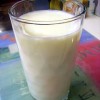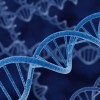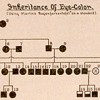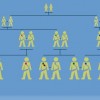Passing on Genes and Traits
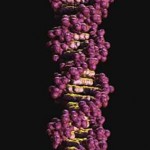 Why do you look the way you do? There are many ways to answer this question, but essentially it all comes down to the information in your DNA and the proteins your cells make. Your DNA contains genes that code for proteins. Different proteins have different functions, each contributing to your various traits and functions.
Why do you look the way you do? There are many ways to answer this question, but essentially it all comes down to the information in your DNA and the proteins your cells make. Your DNA contains genes that code for proteins. Different proteins have different functions, each contributing to your various traits and functions.
Why do we often see similar traits among parents and offspring? We inherit our DNA from our mother and father. This means we have half of our genes, or recipes, from our mom and half from our dad. Even with this basic idea, it can be confusing when we look at traits passed on through generations. Some terms to help include:
Genotype = the genetic information.
Phenotype = the physical trait expressed in the organism.
How are these terms useful or important? Let’s use flower color for an example. If you have a purple flower plant and you cross (mate) it with a while flower plant, what color do you expect to get in the offspring? You do not have enough information to answer that question. You were only given the physical traits of the plants, the phenotype. To accurately predict the color of the offspring you would need to know the genetic background of the parent plants, or their genotype.
It is important to keep in mind that genes do not blend with each other, even though sometimes it seems as though offspring have a blending of traits. Let’s think about it. Why is it important that genes do not blend? Genes are passed on intact from one generation to the next. This allows for phenotypes, or traits, to be expressed over long periods of time. If a trait provides an advantage for survival, it will most likely be passed on and accumulate over time. This process allows for life to continue. If the genetic information mixed every time offspring formed, we would not be here today.
(***Although genes don’t blend, they can mutate and change. That will be a topic for next time!)
| Print article | This entry was posted by Erin McKechnie on September 9, 2009 at 7:37 pm, and is filed under DNA From The Beginning. Follow any responses to this post through RSS 2.0. You can skip to the end and leave a response. Pinging is currently not allowed. |

